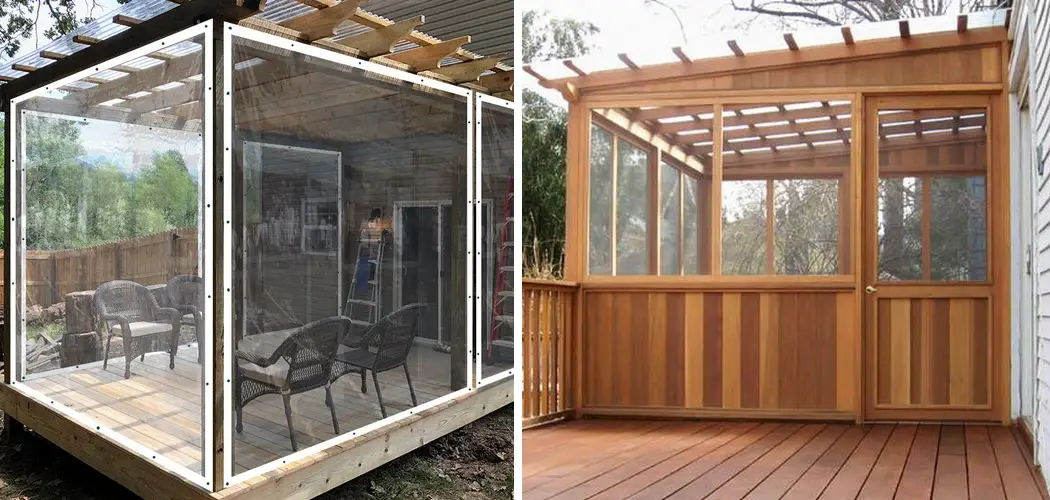Transforming your open-air gazebo into a versatile, year-round space is an appealing prospect, and one effective way to achieve this is by enclosing it with Plexiglass.
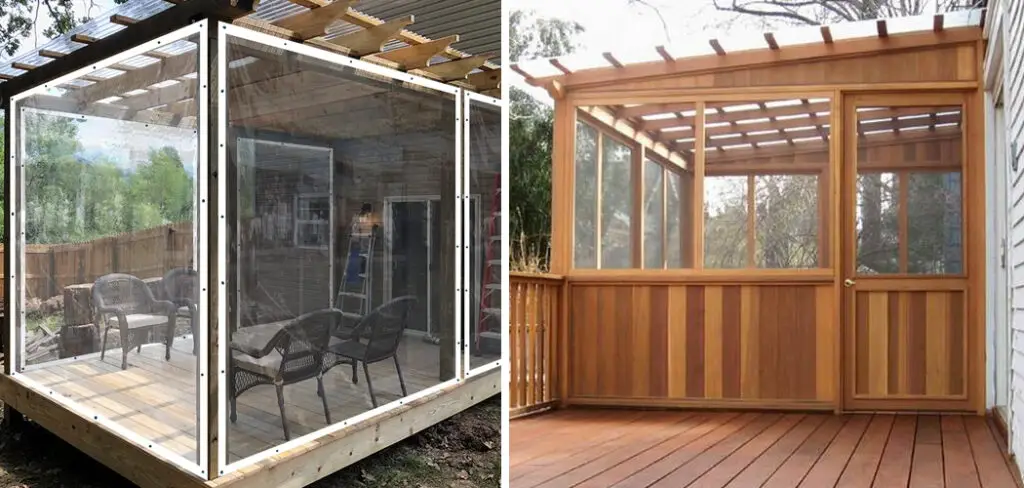
This transparent, durable material offers protection from the elements while allowing you to bask in the beauty of your surroundings. Whether you’re seeking to create a cozy outdoor retreat, a bug-free dining area, or a sheltered workspace, knowing how to enclose a gazebo with Plexiglass is a valuable skill.
In this comprehensive guide, we’ll take you through the step-by-step process of turning your gazebo into an enclosed haven, providing valuable insights on material selection, installation techniques, and maintenance tips.
By the end of this journey, you’ll have the knowledge and confidence to extend the usability of your gazebo throughout the seasons while maintaining an unobstructed view of the great outdoors. So, let’s explore the possibilities of transforming your gazebo into a space that combines the best of both indoor and outdoor living.
The Benefits of Enclosing a Gazebo with Plexiglass
Enclosing a gazebo with plexiglass has many advantages. Plexiglass is lightweight, easy to install, and cost-effective. It also offers superior protection from the elements such as wind, rain, and sun damage.

Additionally, because of its transparency it allows natural light to enter while still providing privacy for occupants. Plexiglass enclosures are also much easier to install than traditional wooden enclosures and can be easily changed or removed when desired.
Plexiglass is also a great choice for those looking to add some aesthetic appeal to their gazebo. The material comes in a variety of colors and designs, allowing homeowners to customize the look and feel of their outdoor living space. With plexiglass, homeowners can create a unique and stylish look that will enhance the beauty of their outdoor space.
Overall, plexiglass is an excellent choice for homeowners looking to add extra protection and style to their gazebo. With its lightweight design, easy installation, cost-effectiveness, and attractive appearance, it is a great option for anyone looking to add some extra protection and style to their outdoor living space.
Measuring the Dimensions of the Gazebo and the Plexiglass Sheets
One of the first steps in enclosing a gazebo with plexiglass is to measure the dimensions of the gazebo and plan out how you will fit the plexiglass sheets around it. Measure each side of your gazebo, including both height and width. The measurements will be used when purchasing the plexiglass sheets.
Cutting Plexiglass Sheets
Once you have measured your gazebo and purchased the plexiglass sheets, it’s time to begin cutting them to fit. Use a saw designed for cutting acrylic plastic or invest in an electric jigsaw with a specialized blade meant for plastic and metal.
Place protective material underneath the cutting area to prevent damage to your work surface. When you’re ready, begin cutting the plexiglass sheets into sections that will fit around the sides of your gazebo.
Drilling Holes in Plexiglass
Depending on how you want to attach the plexiglass, you may need to drill holes for screws. Use a drill with a specialized bit for plexiglass and begin drilling small holes in each sheet of the material.
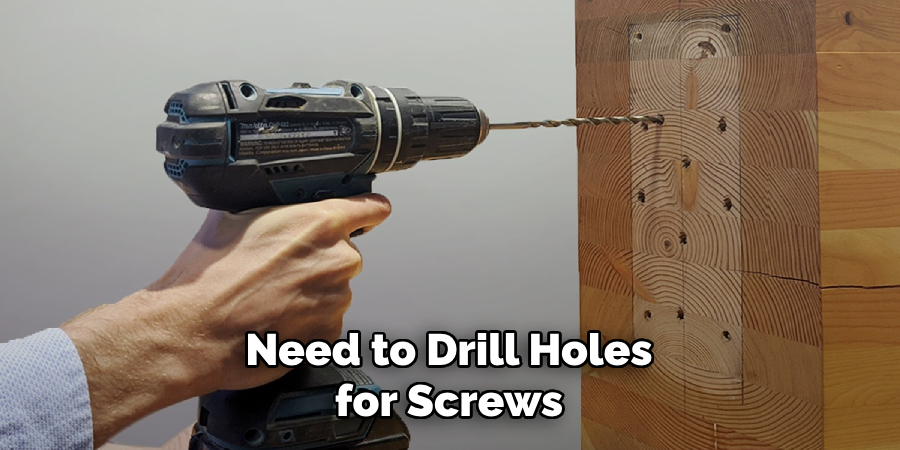
Make sure to measure carefully before drilling to ensure that you are placing the holes in the right spot. You should also wear protective goggles when drilling plexiglass, as it can produce dangerous shards of plastic when being drilled.
Attaching Plexiglass to Gazebo
Once you have finished cutting and drilling the plexiglass, it’s time to attach them to your gazebo. You can use screws or bolts to hold the panels in place. For extra security, consider using sealants or adhesives designed for attaching plexiglass. This will help ensure that the panels stay firmly in place and remain secure even during strong winds or other inclement weather.
10 Methods How to Enclose a Gazebo with Plexiglass
1. Measure the Gazebo
The first step in enclosing a gazebo with plexiglass is to measure the gazebo. Measure the length and width of each side of the gazebo, as well as the height from the floor to the top of the roof. This information will be needed when purchasing plexiglass panels for your gazebo.
2. Purchase Plexiglass Panels
Once you have measured your gazebo, you can purchase plexiglass panels that will fit it perfectly. Make sure to purchase panels that are thick enough to withstand strong winds and other weather conditions. You may also want to purchase UV-resistant panels if you plan on leaving them outside for extended periods of time.
3. Install Support Beams
Before installing your plexiglass panels, you will need to install support beams around the perimeter of your gazebo. These beams should be made out of sturdy material such as wood or metal and should be securely attached to your gazebo’s frame. The support beams will provide additional stability for your plexiglass panels and ensure they remain in place during inclement weather conditions.
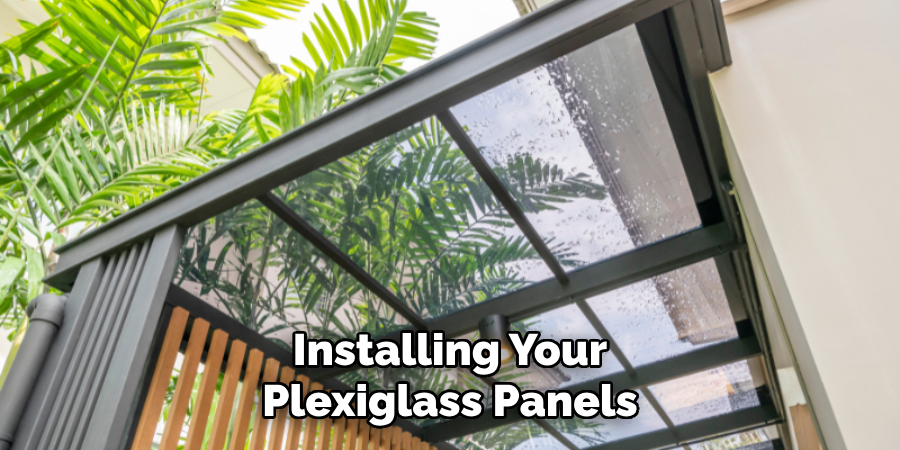
4. Attach Plexiglass Panels
Once your support beams are in place, you can begin attaching your plexiglass panels to them using screws or rivets. Make sure that each panel is securely fastened so it does not come loose during strong winds or other weather conditions.
It is also important to use sealant around each panel’s edges to ensure a tight seal and prevent water from entering through any gaps between them and the support beams.
5. Install Door Frame
If you would like a door in your enclosed gazebo, you will need to install a door frame before attaching any plexiglass panels around it. Make sure that the door frame is securely attached and measure its dimensions so that you can purchase a matching door for it later on.
6. Purchase Door
Once you have installed a door frame, you can purchase a matching door for it at any home improvement store or online retailer specializing in doors and windows. Make sure that the door is made out of durable material such as wood or metal so it can withstand strong winds and other weather conditions without becoming damaged over time.
7. Install Door
After purchasing a suitable door for your enclosed gazebo, attach it to its corresponding door frame using screws or rivets and make sure it is securely fastened in place before continuing with the installation process. If necessary, use sealant around its edges to create an airtight seal between it and its frame so no water can enter through any gaps between them when closed tightly shut.
8. Add Weather Stripping
Weatherstripping should also be added around all sides of both the door frame and the door itself in order to create an airtight seal between them when closed tightly shut..
This will help prevent warm air from escaping during cold winter months while also preventing water from entering through any gaps between them when opened during rainy days..
9. Install Window Frames
If desired, window frames can also be installed into your enclosed gazebo before attaching any plexiglass panels around them. Measure their dimensions carefully so that you can purchase matching windows for them later on.
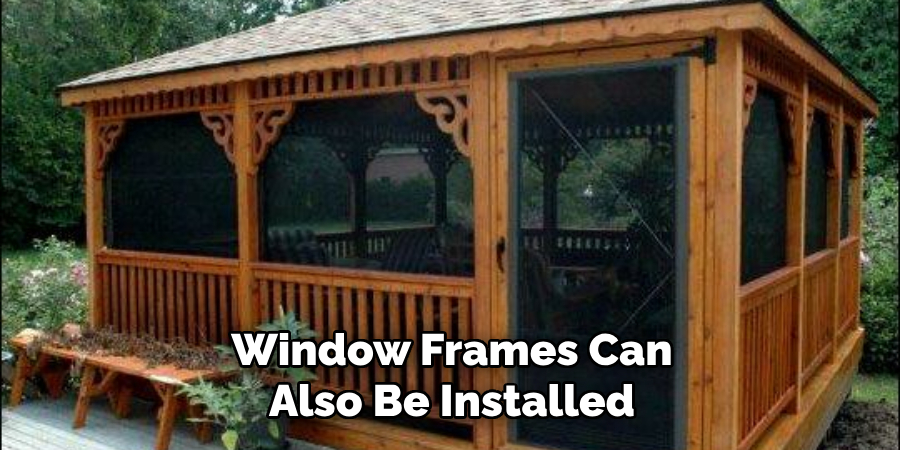
10. Purchase Windows
Once window frames have been installed into your enclosed gazebo, purchase matching windows for them at any home improvement store or online retailer specializing in doors and windows. Make sure that they are made out of durable material such as wood or metal so they can withstand strong winds and other weather conditions without becoming damaged over time.
Things to Consider When Enclosing a Gazebo with Plexiglass
Enclosing a gazebo with plexiglass can be an effective way to keep pests out while still allowing for air flow. It also provides more protection from the sun and rain than many other materials. However, there are some important considerations to take into account when using plexiglass as your enclosure material.
First, you need to consider the weight of your plexiglass. Plexiglass is much heavier than other materials such as wood or mesh, so you will need to make sure that your gazebo can support it. You also need to take into account the fastening materials you use – screws and bolts that are too short could cause the plexiglass to break or become loose.
Second, you need to consider the strength and durability of your plexiglass enclosure. Plexiglass can be easily scratched or cracked, so you should avoid using any abrasive cleaners or harsh chemicals on it.
Conclusion
Plexiglass can be an ideal and cost-effective solution to enclosing your gazebo. Besides being lightweight, easy to install and low maintenance in upkeep, it still offers protection from the elements. With plexiglass, you won’t have to worry about bugs, wind or snow getting into the gazebo. We hope this guide has helped you learn how to enclose a gazebo with plexiglass and that you now feel comfortable taking on the task!
Once your enclosure is complete, not only will you have a beautiful and unique feature in your outdoor area that sets it apart from the rest, but also a space for entertaining family and friends year round. So don’t wait any longer; get started today and transform your gazebo with plexiglass enclosure.
About
Outdoor Fixes is a distinguished figure in the world of Diy design, with a decade of expertise creating innovative and sustainable Diy solutions.
His professional focus lies in merging traditional craftsmanship with modern manufacturing techniques,
fostering designs that are both practical and environmentally conscious. As the author of diy,
outdoorfixes delves into the art and science of outdoorfixes-making, inspiring artisans and industry professionals alike.
Education RMIT University
(Melbourne, Australia) Associate Degree in Design (Outdoor Fixes) Focus on sustainable design, industry-driven projects,
and practical craftsmanship. Gained hands-on experience with traditional and digital manufacturing tools, such as CAD and CNC software.
Nottingham Trent University
(United Kingdom) Bachelor’s in outdoorfixes.com and Product Design (Honors) Specialized in product design with a focus on blending creativity with production
techniques. Participated in industry projects, working with companies like John Lewis and Vitsoe to gain real-world insights.
Publications and Impact
In diy, Outdoor Fixes his insights on indoor design processes, materials, and strategies for efficient production.
His writing bridges the gap between artisan knowledge and modern industry needs, making it a must-read for both budding designers and seasoned professionals.

